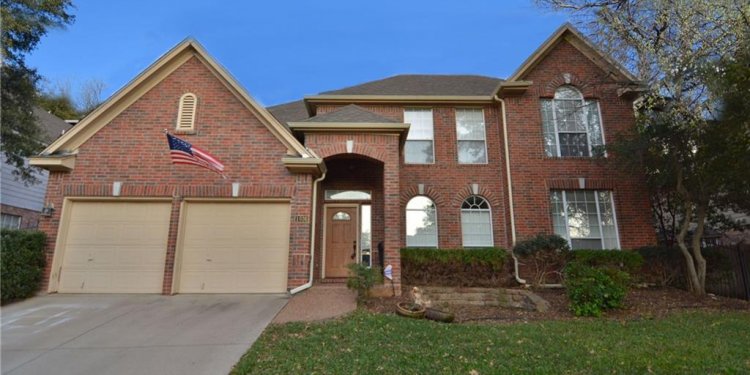
Duplex rent Tarrant County
Tarrant County is a county in Texas. The population of Tarrant County, according to the 2010 Census, is 1, 809, 034. The total number of households in the county is 657, 134. The average household size for Tarrant County is 2.59. The total number of renter households in the county is 248, 310 which means that 37.8% of households are renter households.
Tarrant County’s Federally assisted affordable rental housing stock includes properties financed through the following programs:
| Program | Properties | Units |
|---|---|---|
| Section 8 | 25 | 2, 454 |
| LIHTC | 100 | 14, 416 |
| RD 515 | 10 | 461 |
| Section 202 | 14 | 943 |
| Section 811 | 12 | 117 |
| Public Housing | 17 | 1, 626 |
| Total | 149 | 18, 755 |
| Note: The total does not necessarily equal the sum of each program as some properties may participate in multiple funding programs. | ||
The average number of units per property for affordable rentals in Tarrant County is 125.90. The largest Federally assisted affordable rental community in the county is Goldston at 366 units and the smallest is Kenneth L at 1 unit(s). 20 apartment properties provide housing for seniors containing 1, 847 units. Of the 18, 755 units, 5, 370 units include some form of rental assistance (like Section 8) to make rent more affordable for very low income families.
Federally Assisted Units By Property
| Name | Sec 8 | Sec 811 | Sec 202 | LIHTC | RD 515 | Sr | Total Units |
|---|
Rental Assistance for Tenants in Tarrant County
Rental assistance is a type of housing subsidy that pays for a portion of a renter’s monthly housing costs, including rent and tenant paid utilities. This housing assistance can come in the form of Section 8 Housing Choice Vouchers, project-based Section 8 contracts, public housing, USDA Rental Assistance (in Section 515 properties) as well as HUD Section 202 and 811 properties.
In Tarrant County, there are 69 affordable housing properties providing rental assistance to 5, 370 very low income households. In addition, Tarrant County Housing Assistance Office provides 2, 508 Section 8 rental vouchers in Tarrant County.
To qualify for most rental assistance programs a renter must earn no more than 50% of the Area Median Income (AMI). In some cases, rental assistance is reserved for renters earning 30% or less of the AMI. In Tarrant County, to qualify for Section 8 assistance, a renter household containing four persons must earn $34, 700 or less. For some targeted rental assistance programs, a renter household of four can’t earn more than $24, 300.
It’s important to remember that in many rental assistance programs there are minimum rent regulations requiring assistance recipients to make a minimum payment of between $25 and $50 per month no matter how low their income.
HUD Assistance Income Limits
| Persons | |||||||
| $24, 300 | $27, 800 | $31, 250 | $34, 700 | $37, 500 | $40, 300 | $43, 050 | $45, 850 |
| $14, 600 | $16, 650 | $20, 160 | $28, 440 | $32, 580 | $36, 730 | $40, 890 |
Income Limits
All affordable housing programs provided by or through the government have maximum income limits to qualify for assistance. These income limits are typically derived from the Area Median Income (AMI), the theoretical family income of the average household in a given geography.
The AMI is updated each year for each geographical area taking into consideration numerous economic indicators. The geographical areas used for establishing the AMI are either Metropolitan Statistical Areas (MSA’s) or counties.
Tarrant County is in the Fort Worth-Arlington, TX HUD Metro FMR Area MSA. The 2016 Area Median Income for a family of four in Tarrant County is $69, 400.
The income limits used for Section 8, public housing, Low Income Housing Tax Credits. the HOME program and other Federal programs all are derived from the HUD defined AMI.
Low Income Housing Tax Credit Income Limits
| $29, 160 | $33, 360 | $41, 640 | $45, 000 | $48, 360 | $51, 660 | $55, 020 |
Fair Market Rents (FMR)
HUD establishes a Fair Market Rent each year for each Metropolitan Statistical Area in the country. This rent standard is used to establish Payment Standards for the Section 8 Housing Choice Voucher program, maximum rents in HOME financed rental projects and initial rents for Section 8 project based assistance. HUD establishes FMR’s for 530 MSA’s and 2, 045 counties nationwide each fiscal year.
The FMR is largely a statistical derivative of the US Census Bureau's American Community Survey (ACS) 5 year estimates for 2 bedroom median rent.
Calculating the maximum allowable rents under various subsidy programs is complex and each program has slightly different rules. In the Section 8 Housing Choice Voucher and Project Based Assistance programs, maximum rents a landlord may charge include any tenant paid utility costs.
This utility allowance includes all necessary utilities like water/sewer, trash, heat, electricity or gas. Cable television, telephone, Internet and other non-essential utilities are excluded from this allowance.
In Project Based Section 8 properties, the owner sets the utility allowance after conducting a utility cost analysis. The amount of the allowance is reviewed and approved by HUD. The utility allowance is different for each size dwelling unit.

















